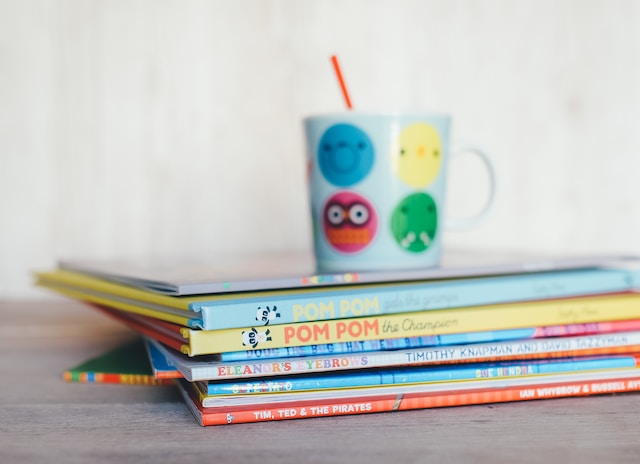Building solid foundations takes patience and time, but it is worth the effort. Just like a skyscraper, the stronger the foundations are, the taller the tower will be.
During shared reading, children learn to transfer conceptual information from books into the real world. In our study, this included the ability to shift perspectives and understand others’ emotions.
Vocabulary
Children who learn a new language through books build their vocabulary by hearing and seeing the words in meaningful contexts. It is called “anchored word learning.” Research shows that books are an ideal way to teach students a new language.
Books contain a variety of vocabulary, including nouns, verbs, adjectives, and adverbs, as well as sophisticated Tier 2 words. These are the types of words that help develop language in reading, writing, and other content areas.
For example, when children hear and read “organization” in a story, they will recognize it as an essential term that means more than just a group of people working together. In addition, children who learn new vocabulary through books collect and store these words in their long-term memory. It is vital because the longer a child has a word in their speech, the more likely they are to know what it means and to understand complex text later on.
Grammar
To learn a language efficiently, children need to hear new words in grammatically correct sentences. Children’s language learning books offer a way to do just that! The best ones use the same word on several pages so that children can see it in different contexts. They also help children understand the meaning of the new words by explaining them, providing pictures, and pointing to them. They also respect basic grammar rules such as grammatical gender (which is essential for young learners).
One study tested an intervention that used children’s literature to support children’s second language learning and other sociocognitive skills. The extended program, a loosely scripted classroom intervention, involved teachers reading books with children and inviting them to reason through open-ended questions, explore ideas, shift perspectives, acquire associated topic knowledge, and extend the book theme through play and other activities. The results showed that this approach substantially impacted children’s grammar, narrative skills, and perspective-taking.
Comprehension
Kids’ language books that feature flamboyant pictures and enthralling stories help make learning fun. Research suggests that the frequency parents read to children significantly predicts their language development and school readiness.
In addition to promoting vocabulary and grammar, reading with your kids also supports their comprehension skills. The use of pictures and the rhythmic cadence of a story help kids learn to connect words with their meanings. Kids also become familiar with the structure of spoken language as they listen to and repeat their favorite stories.
Reading with your kids can also increase their understanding of scientific concepts like camouflage and migration. Research shows that 3- and 4-year-olds can transfer biological knowledge learned from picture books with fantastical or realistic contexts. Further research is needed to determine whether other book features, such as manipulative features, anthropomorphism, and genre, influence children’s biological learning from picture books. Regardless of the subject matter, however, it is clear that reading with your kids increases their understanding and makes it more likely that they will retain this information over time.
Social Skills
Books allow children to observe how characters interact, resolve conflicts, and express emotions. Children can then use these skills in their social interactions with others.
Children can also learn pragmatic language through the stories they read. Practical language is how people use language to communicate effectively, and it includes things like turn-taking, expressing interest in others, and understanding others’ perspectives.
When selecting a book, consider the child’s age and developmental stage. It is crucial that the book captures their interest and is at a level they can comprehend. It is also essential to discuss the book with the child before reading to activate their prior knowledge and set expectations for the story.
It is also beneficial to choose books that have a variety of vocabulary and sentence structures. Research shows that young learners must hear new words in various grammatical contexts to learn them efficiently.
